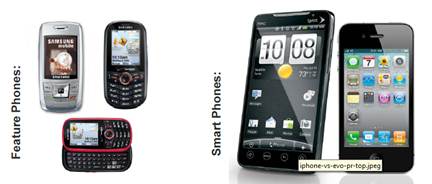How do you take the concept of mobile marketing and make it both actionable and profitable? Driving Mobile Traffic: SEO PPC, a panel at SES New York 2012 moderated by Angie Schottmuller (@aschottmuller), Founder, Interactive Artisan, tackled the marketplace today, mobile friendly websites, and PPC and SEO fundamentals specific to mobile marketing. Here’s a recap of the information-packed session.

Why Mobile Matters
Jason Wells (@jasonrwells), CEO, ContactPoint, started by giving the audience a nice overview the mobile marketplace and important statistics and trends in adoption.
Why is it the right time to start moving forward in mobile marketing? We’re at the beginning of the adoption curve for marketers but it is certainly starting to ramp up. It is at this point where the winners in their respective marketplaces will be decided.
Need mobile marketing stats? Wells’ presentation didn’t disappoint. Here is the short list:
- There are 6.8 billion people on the planet, 5.1 billion own a phone, and only 4.2 billion own a toothbrush (Unysis 2011)Â
- It takes on average 90 minutes to respond to email and only 90 seconds to respond to a text message (CTIA.org 2011)Â
- The percentage of mobile subscribers that own a smartphone has gone from 31 percent in January 2011 to 48 percent in January 2012 (Nielsen 2012)Â
- In the 18-34 year old age group, 80 percent of those that bought a phone in the past 3 months bought a smartphone (Nielsen 2012)Â
- 9 of 10 mobile searchers take action after a phone search (Google 2011)Â
- 7 of 10 mobile searchers take action within an hour (Mobile Marketer 2011)Â
- Google predicts mobile search will surpass desktop search at some point within or between 2014 and 2015
Addressing mobile PPC fundamentals, Wells outlined several core places to start.
- It’s critical to set clearly defined goals (examples: lead generation, application download, buy now, phone call, in-store visit).
- Don’t simply assume similarities with desktop search.Â
- Evaluate your websites landing pages to determine if they are mobile ready through testing on various devices and browsers (Android 2.x and iOS 3.x or later).Â
- Don’t forget mobile analytics. Capture and report on device and browser information (and behaviors associated with them) to make future assessments.
Wells recommended setting up a separate mobile campaign from desktop campaign and noted that Google AdWords will syndicate on mobile to start (so you might want to prevent that from happening). Other key pieces of information on mobile campaign development:
- Bid for position 1 to 5 to be on Page 1 for mobile results but many searches will end up with only 1 to 3 ad messages on first page results.
- Leverage keyword misspellings and emphasize shorter keyword phrases.
- Start broad (match) to discover various mobile keyword phrases and then use negative keywords and phrase matches to optimize.
- Geo-target and take advantage of location awareness.
- Incorporate Day-Parting as desktop search “off-hours†become mobile search “on-hoursâ€.
- Sell the click more than ever as you need short ad copy for shorter attention spans.
- Mobile searchers are looking for “instant gratification†(call, buy, or download now) and want to see 1-click actions.
- The most common action in mobile is a phone call.
Remember that there are distinct differences between smartphones and tablets. You have to build site assets that tackle both.

Building a Site With Mobile Device Usage SEO in Mind
Avi Wilensky (@aviw), CEO of Promediacorp, was up next and his presentation focused on mobile site optimization. Wilensky argued that the term “mobile SEO†was rather nebulous. There is no consensus on the definition. What is key for marketers is to get the user experience right, keep bounce rate down, and focus on site architecture and the consolidation of link equity.
A bad user experience leads to the searcher returning to search engine results.
While there is a significant debate on building mobile through the use of subdomains versus subdirectories versus completely different top level domains, the specific scenario will often dictate choice. For example, subdomains might be easiest to implement but run a risk, since search engines will see as two separate sites, which could divide link equity.
The biggest SEO issue regardless with mobile sites is in dealing with and mitigating divided link equity. Wilensky provided links discussing the major search engines positions on this.
- Google: One URL With Special Stylesheet Is Easy Mobile SEO
- Bing Takes Clear Stance On Mobile SEO: One URL
Wilensky indicated that Google may “resize, adjust, or convert images, text formatting and/or certain aspects of web page functionalityâ€, in an effort to show optimal mobile browser layouts (of sites) from traditional desktop-specific results. This is known as transcoding and Google has a full write-up and how to mitigate this through redirection.
Responsive Web Design
The big topic in the mobile development world is responsive web design, which is device agnostic, using the media query in CSS3 to detect the display size. Layout renders as a result of screen real estate available.
There are pros and cons to responsive web design to consider.
- Responsive web design (RWD) will not be an easy win on legacy sites.
- While RWD enables a single URL structure (maximum link equity) it can be tricky to implement.
- No server side redirection (faster) but for advanced mobile marketing, there may be a need to design with multiple screen sizes and orientations in mind.
- Fewer URLs and more crawl budget but not IE8 supported or with older versions of Firefox.
- One HTML page (less maintenance) but more calls and slower page load.
Finally, Wilensky made mention of a new smartphone Google Mobile bot looks at smart versus feature phones, not device type. New Googlebot improves UX by displaying the destination URL in the SERPs, decreases latency by avoiding mobile redirects.

The Cross-Over Between PPC SEO in Mobile Marketing
Kerri Smith, Senior Innovation Lead for Mobile at iProspect, closed out the session with a presentation focused on the cross-over between PPC and SEO in mobile marketing. The first goal of the mobile SEO and PPC strategy? Own SERP real estate.
- 85 percent of visitors look at the top 2 AdWords results.
- 60 percent above the fold for organic listings whereas 16 percent (and lower) below the fold.
- When owning SERP real estate for keywords in mobile, viewing time is nearly double and improves brand awareness by 4 times.
Smith stressed the importance of knowing how to spot indexing problems. Are site variations appearing appropriately for various devices and sources? Another important recommendation was to ensure users are getting to the right locations (i.e., don’t redirect mobile users to home page, redirect to the specific, applicable page).
Mobilizing the Advertising Experience
When developing mobile ads, Smith recommended to efficiently capturing traffic by offering users the experience that is most desirable to them. Take advantage of mobile specific ad units:
- The Must-Haves: Site Links (increase SOV reduce the user click path with deep linking) and Offer Ads (increase CTR/decrease CPC and opportunity to connect online to offline)Â
- Location Extensions: Triggers if user is in proximity to location in both search and maps, increases relevancy can be used to drive in-store trafficÂ
- Bid by Distance: Bid boost around locationsÂ
- Click to Call: With click to call, give the user the choice and optimize to their best experience
Effectively keep traffic by optimizing the user experience to take advantage of device functionality and make sure to optimize for local search, click to call, and form optimization
Search Engine Optimization Tips for Local
It’s important to focus (refocus?) on core SEO elements when optimizing for local. This includes:
- Title tags, meta keywords (suggests property specific location information)Â
- Image ALT tags (go beyond the basic “what is it†and use location-based ALTs)Â
- Update and ensure ongoing maintenance of location information to keep content fresh for mobile users Â
- Make the experience social by influencing the consumer consideration cycle by leveraging popular social media platforms (Bing – Facebook/Twitter, Google/Google+, Pinterest/Instagram, Foursquare ExploreÂ
- Allow active consumers to endorse your product drive qualified traffic
“Users are in more control of the internet than ever. Empower them as best you can to gain their trust and learn from their feedback.â€
SES Toronto 2012 is June 11-13. Register before May 11 and save up to $300!
